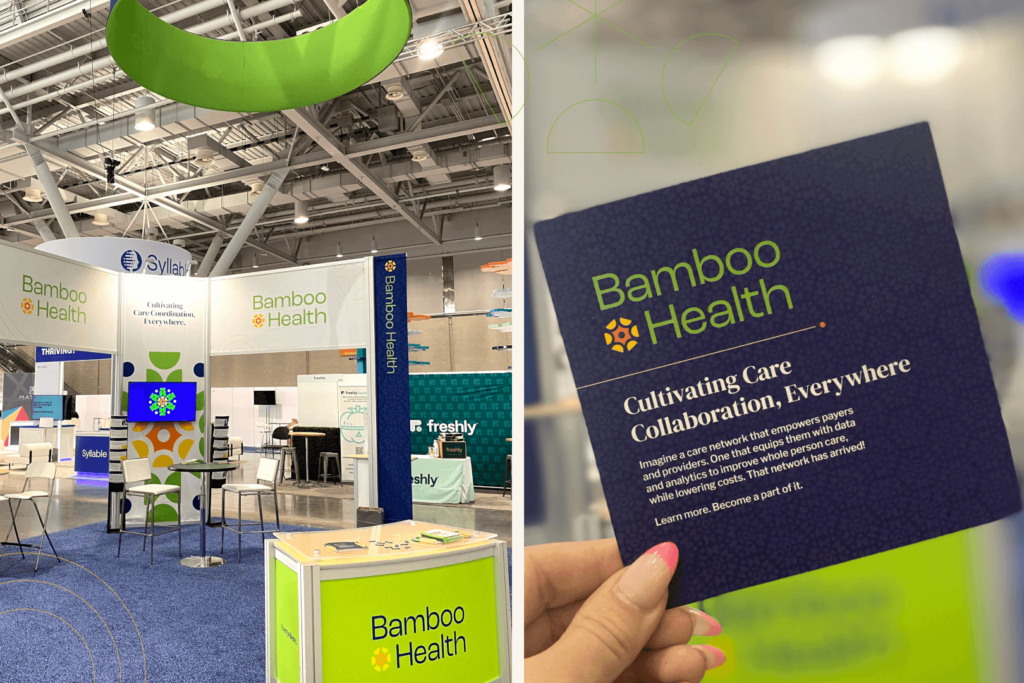Bamboo Health recently had the pleasure of exhibiting at HLTH 2021, which served as the first opportunity to unveil our new company brand in person since launching in late August. HLTH also provided a great chance for our team to participate in important discussions with an esteemed group of healthcare leaders, government officials, policy experts, politicians, and tech influencers. Below is a summary of the three key takeaways from our discussions that will help to shape the healthcare industry’s future.
1. Care is Moving Beyond Hospital Walls
According to the U.S. Census Bureau, older adults are expected to outnumber children in population size by 2034, with 65-year-olds and over projected to number 77 million, which comes as no surprise as the Baby Boomer generation continues to age. As a result, the home healthcare industry represents one of the fastest expanding industries in all of healthcare. The Home Care Benchmarking Study by Home Care Pulse projects that in 2021, there will be approximately 9,000 more home care agencies than there were five years ago. This follows 2020, a year in which U.S. home care spending reached an all-time high of $113.5 billion.
COVID-19 has accelerated this trend, making it more acceptable for people to seek accessible and affordable care options. Beyond home healthcare providers, points of access now include retail clinics, behavioral health clinics, and community centers. As the population continues to age and patients increasingly choose to remain in their homes, the boundaries of clinical capacity will continue to extend beyond traditional physical and geographic lines.
2. Consumerization of Healthcare
Adding to the growth of home healthcare, it’s never been clearer that how we access healthcare is changing. In the past, when we got sick, we all traveled a similar patient journey utilizing primary care providers or hospitals; however, that paradigm has shifted. Patients increasingly prefer to receive convenient care via today’s technologies.
From telehealth options to at-home testing kits to remote monitoring systems to primary care in retail pharmacies, these developments, along with increased public openness to receiving new methods of care, have forced providers to partner with tech companies on solutions. This shift in how we access care has the potential to enable a more personalized, cost-effective, value-based care delivery model.
3. Value-Based Care is Here to Stay
While there have been numerous changes to the value-based care landscape over the last few years, the acceleration toward value-based care models is still hot. This is partly due to the emphasis that federal and private payers have placed on increasing access to care and lowering total cost of care. And this underscores the importance of products and services that put the patient’s whole care experience first. Through effective care collaboration about patients’ care encounters across the physical and behavioral health spectrums, care teams gain new levels of visibility to improve care quality, reduce total cost of care, and minimize post-acute spending and unnecessary emergency department visits.
Bamboo Health solutions enable just that by supporting one, connected network—all with care coordination and total cost of care top of mind. For example, we recently announced that Bamboo Health’s national network of Accountable Care Organizations (ACOs) generated over $1 billion in total shared savings in 2020 under the Medicare Shared Savings Program (MSSP). Bamboo Health’s ACO partners achieved this success in the value-based care program by utilizing our Pings solution, which provides real-time visibility into patient admission, discharge, and transfer (ADT) care events. Pings enables ACOs to identify high-utilizers, monitor post-acute length-of-stay, and apply timely interventions to reduce emergency department to inpatient conversions.
The Future of Healthcare
In closing, we are encouraged by the positive input and feedback that we received at HLTH. The event provided a refreshing reminder that innovation in the healthcare industry—and transformational change—is well on its way.
At Bamboo Health, we believe the key to better care rests in ensuring that all participants in the care continuum have access to real-time patient data and the ability to coordinate and collaborate with other providers. Whether patients are at home or utilizing the latest technologies to meet their needs, real-time information provides clinical intelligence to successfully prioritize and deploy services and ensure seamless care transitions, while also creating optimal opportunities to deliver on the promise of value-based care.
We look forward to leveraging this positive momentum as we continue our work creating one of the most comprehensive, diverse care collaboration networks in the country.



